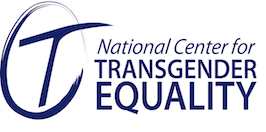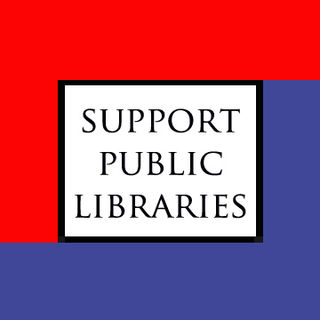History
Preservation Action came about after the National Historic Preservation Act of 1966. Early in the 1970s, preservation leaders realized that achieving their goals required substantial increases in federal support. This included especially the need for appropriations for federal-state preservation programs, changes in laws and regulations, and an understanding of the U.S. Congress and the federal government of the benefits of historic preservation. [2] Preservation Action proved instrumental in the passage of various laws and amendments, including the Tax Reform Act of 1976. Following the success of these early advocacy efforts, the focus shifted slightly to helping local organizations advocate for preservation in their own communities and states as well as continuing to lobby Congress for increased funding for federal preservation projects and agencies. [3]
The success of Preservation Action at the federal level, inspired the establishment of enhanced preservation lobbying efforts at the state level. Such was the case with the establishment of Connecticut Preservation Action in 1979, to overturn a newly enacted law that would have crippled the state's National Register program. [2]
In the 1980s preservationists were increasingly interested in the 'business' of preservation'. Initiatives like the Main Street Program, established by the National Trust for Historic Preservation in 1980, helped to focus efforts to improve historic downtown areas and commercial districts throughout the United States. Into this milieu came Preservation Action, that along with the National Trust for Historic Preservation, served as an important advocate for historic preservation at the federal level. [4]
With improved incentives for historic preservation in the form of tax credits and other programs, the focus of urban projects shifted dramatically from demolition to rehabilitation. Nellie Longsworth, founding member and President of Preservation Action for twenty-two years, [5] explained: "All kinds of things have been tried to stop the deterioration of downtowns. The first program that ever really worked was the investment tax credit." [4] With the unprecedented growth in historic preservation activities, Preservation Action cemented its role as a rallying point for the private historic preservation community at the national level, along with the National Trust for Historic Preservation. [2] Sources credit this coming together of forces in support of historic preservation, and Longsworth especially. Arthur P. Ziegler Jr., wrote "Never before or since have we seen preservation activities carried out so diligently by so many with such excellent results." [6]
In more recent decades, federal programs such as Save America's Treasures and Preserve America have brought resources to the front lines of where preservation work is being done in communities. These same programs, despite their effectiveness, were threatened by cutbacks in funding in the present fiscal environment. Preservation Action has always and continues to play an important role in advocating for these federal programs to support historic preservation at the state and local level.
In 2015, Preservation Action started to conduct monthly calls with statewide organizations to better connect states to the legislative efforts happening at the federal level, as well as, connecting Preservation Action the legislative efforts happening at the state and local level. [7]
In 2016, prior to the November Congressional elections, Preservation Action conducted a Federal Candidate Historic Preservation Survey. Preservation Action conducted a nationwide historic preservation survey of all candidates running for the U.S House and U.S Senate. The survey gauged candidates on their support of a number of issues important to preservationists, like the Historic Preservation Fund and Federal Historic Rehabilitation Tax Credit program. [8]

The National Trust for Historic Preservation is a privately funded, nonprofit organization based in Washington, D.C., that works in the field of historic preservation in the United States. The member-supported organization was founded in 1949 by congressional charter to support the preservation of America’s diverse historic buildings, neighborhoods, and heritage through its programs, resources, and advocacy.

Americans for Tax Reform (ATR) is a politically conservative U.S. advocacy group whose stated goal is "a system in which taxes are simpler, flatter, more visible, and lower than they are today." According to ATR, "The government's power to control one's life derives from its power to tax. We believe that power should be minimized." The organization is known for its "Taxpayer Protection Pledge", which asks candidates for federal and state office to commit themselves in writing to oppose all tax increases. The founder and president of ATR is Grover Norquist, a conservative tax activist.
A 527 organization or 527 group is a type of U.S. tax-exempt organization organized under Section 527 of the U.S. Internal Revenue Code. A 527 group is created primarily to influence the selection, nomination, election, appointment or defeat of candidates to federal, state or local public office.

The Friends Committee on National Legislation (FCNL) is a national nonprofit, nonpartisan Quaker organization. As a 501(c)4 advocacy organization, FCNL and its network lobby Congress and the administration to promote peace, justice, and environmental stewardship. It was founded in 1943 by members of the Religious Society of Friends (Quakers).

The National Center for Transgender Equality (NCTE) is a nonprofit social equality organization founded in 2003 by transgender activist Mara Keisling in Washington, D.C. The organization works primarily in the areas of policy advocacy and media activism with the aim of advancing the equality of transgender people in the United States. Among other transgender-related issue areas, NCTE focuses on discrimination in employment, access to public accommodations, fair housing, identity documents, hate crimes and violence, criminal justice reform, federal research surveys and the Census, and health care access.

Historic preservation (US), heritage preservation or heritage conservation (UK), is an endeavor that seeks to preserve, conserve and protect buildings, objects, landscapes or other artifacts of historical significance. It is a philosophical concept that became popular in the twentieth century, which maintains that cities as products of centuries’ development should be obligated to protect their patrimonial legacy. The term refers specifically to the preservation of the built environment, and not to preservation of, for example, primeval forests or wilderness.

The Marijuana Policy Project (MPP) is the largest organization working solely on marijuana policy reform in the United States in terms of its budget, number of members, and staff. Its stated aims are to: (1) increase public support for non-punitive, non-coercive marijuana policies; (2) identify and activate supporters of non-punitive, non-coercive marijuana policies; (3) change state laws to reduce or eliminate penalties for the medical and non-medical use of marijuana; and (4) gain influence in Congress. MPP advocates taxing and regulating the possession and sale of marijuana in a manner similar to alcohol, envisions a nation where marijuana education is honest and realistic, and believes treatment for problem marijuana users should be non-coercive and geared toward reducing harm. The organization and it's various ballot initiatives has largely been funded by the late billionaire Peter B. Lewis, and now by his family.
Campaign finance in the United States is the financing of electoral campaigns at the federal, state, and local levels. At the federal level, campaign finance law is enacted by Congress and enforced by the Federal Election Commission (FEC), an independent federal agency. Although most campaign spending is privately financed, public financing is available for qualifying candidates for President of the United States during both the primaries and the general election. Eligibility requirements must be fulfilled to qualify for a government subsidy, and those that do accept government funding are usually subject to spending limits on money.
The American Coalition for Clean Coal Electricity is a U.S. non-profit advocacy group representing major American coal producers, utility companies and railroads. The organization seeks to influence public opinion and legislation in favor of coal-generated electricity in the United States, placing emphasis on the development and deployment of clean coal technologies.
The National Iranian American Council is a nonprofit, civil society, and lobbying NGO based in Washington, D.C. Trita Parsi was one of the founders and is the organization's former president. Jamal Abdi, formerly NIAC's Vice President for Policy and Executive Director for NIAC Action, took over as president on August 1, 2018.

The Georgia Trust for Historic Preservation is the United States' largest statewide, nonprofit preservation organization with more than 8,000 members. Founded in 1973 by Mary Gregory Jewett and others, the Trust is committed to preserving and enhancing Georgia's communities and their diverse historic resources for the education and enjoyment of all.
The Historic Preservation Fund (HPF) provides financial support for historic preservation projects throughout the United States. The fund is administered by the National Park Service (NPS), pursuant to the National Historic Preservation Act of 1966 (NHPA). The fund provides state historic preservation agencies with matching funds to implement the act.

The American Cancer Society Cancer Action Network is a nonprofit, nonpartisan advocacy affiliate of the American Cancer Society. It was founded in September 2001 to directly lobby the goals of the American Cancer Society, which is subject to restrictions on advocacy activities because of its tax classification. ACS CAN works to make cancer a national priority. Specifically, it advocates for better access to care, cancer prevention and early detection programs, cancer research funding, regulation of tobacco by the U.S. Food and Drug Administration, better quality of life for cancer patients, and attempts to raise awareness of and reduce cancer disparities. Members include cancer survivors, caregivers, patients, volunteers, and students, including Colleges Against Cancer.

The Jay Heritage Center (JHC) is a 501(c)(3) not-for-profit organization incorporated in 1990 and chartered by the New York State Board of Regents to act as stewards of the 23-acre Jay Estate, the National Historic Landmark home of American Founding Father John Jay. Jay's ancestral property in Rye, New York is considered the centerpiece of the Boston Post Road Historic District.
The American Council of Engineering Companies (ACEC) is the oldest and largest business association of engineering companies. It is organized as a federation of 52 state and regional councils with national headquarters in Washington, D.C., comprising thousands of engineering practices throughout the country. It administers extensive lobbying and education programs.

Public library advocacy is support given to a public library for its financial and philosophical goals or needs. Most often this takes the form of monetary or material donations or campaigning to the institutions which oversee the library. Originally, library advocacy was centered on the library itself, but current trends show libraries positioning themselves to demonstrate they provide "economic value to the community."
Grassroots lobbying is lobbying with the intention of reaching the legislature and making a difference in the decision-making process. Grassroots lobbying is an approach that separates itself from direct lobbying through the act of asking the general public to contact legislators and government officials concerning the issue at hand, as opposed to conveying the message to the legislators directly. Companies, associations and citizens are increasingly partaking in grassroots lobbying as an attempt to influence a change in legislation.
Every Voice is an American nonprofit, progressive liberal political advocacy organization. The organization was formed in 2014 upon the merger of the Public Campaign Action Fund, a 501(c)(4) group, and the Friends of Democracy. Every Voice, along with its affiliated Super PAC, Every Voice Action, advocates for campaign finance reform in the United States via public financing of political campaigns and limitations on political donations. The organization's president, David Donnelly, has said "We fully embrace the irony of working through a Super PAC to fight the influence of Super PACs."
Environmental Action is a 501(c)(4) non-profit environmental advocacy organization in the United States. Founded in 1970 by environmental activists at the first Earth Day, it operated until 1996 but was then rebooted in 2012 as part of the Public Interest Network, a family of non-profit organizations that includes the Public Interest Research Group, Environment America, Green Corps and others.
Nellie Leber Longsworth is an American historian and advocate of historic preservation. She was a founder and president of the nonprofit Preservation Action for twenty-two years. She worked to preserve historic structures by working and lobbying to pass legislation in United States Congress.










